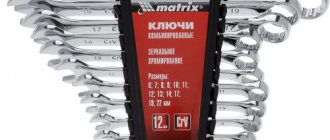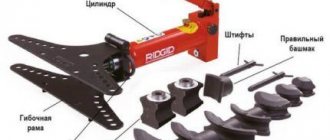Modern faucet models are equipped with aerators - these are mesh filters designed to filter and enrich water with air. Another useful function of this device is to reduce water consumption. Regular increases in prices for housing and communal services and concern for the preservation of natural resources make us think about ways to save natural resources.
Device for saving water Source 5inch.rf
Why do you need a faucet aerator?
The “official” purpose of any aerator is to reduce water consumption. That is why the second name of such a device is “saver”. Savings, according to developers and sellers, occur due to mixing the water jet with air. And if, under normal conditions, approximately 15 liters of water per minute flows through a tap that is fully open, then the aerator adjusts this figure to 6-8 liters, with virtually no reduction in pressure.
In addition, a saving aerator can:
- reduce the noise of liquid flowing from the tap (air bubbles in the stream significantly soften its fall);
- reduce the amount of splashes generated when the flow collides with the container of a sink or bath bowl (thanks to the same bubbles);
- make the stream softer and more pleasant (especially important when it comes to water treatments for the face and body);
- work as an additional coarse filter (by the way, all aerators without exception are equipped with the simplest filters).
In general, all this is quite enough to make you think about choosing and purchasing such a device. Moreover, almost all of them have a universal design, which means they can be installed on any mixer.
And most aerators:
- compact and not too conspicuous;
- easy to use and install;
- For the most part, they are quite durable (if you don’t make a mistake with the material, of course).
However, aerating devices also have disadvantages:
- if the quality of water in a centralized water supply system is low, any aerator needs to be constantly cleaned, repaired, or even replaced;
- reducing the incoming volume of water flow (and this can be important, for example, when you urgently need to fill some container).
No other disadvantages were noticed with the aerators.
Using the water-saving nozzle
Tap water contains particles of rust, impurities and salts. These substances linger on plumbing fixtures, forming plaque. To increase their service life, the nozzles must be cleaned periodically. If the water pressure decreases and there is no characteristic hissing, the aerator should be cleaned.
Water divider Source bossini.it
Equipment cleaning process:
- The diffuser is disconnected from the faucet spout.
- Then remove the rubber gasket. If cracks or tears appear on the seal, it must be replaced.
- The aerator is disassembled, washed and wiped with a napkin. The mesh holes are cleaned with a needle or awl and then washed with water.
- The divider is connected to the mixer and checked for leaks.
- A well-cleaned filter does not prevent the passage of high water pressure.
How does a faucet aerator work?
A water aerator is a simple device, however, consisting of 3 components: a body, a cartridge and a sealing gasket. The latter ensures a hermetically sealed installation of the device. The main secret of the aerator is the manufacturing scheme of its cartridge. Depending on this it can be:
- Shchelev. In such a water-air mixture is formed using a special disk with technological slots. The flow of water, crashing into the deflecting disk, passes through these narrow slits and breaks into small droplets. As a result, mixing with air occurs, and then the jet, passing through the divider, stabilizes.
- Or disk, with a reflector. These aerators have a different operating principle. A disk with small holes divides the water flow into jets, which mix with air, breaking against a special reflector. A fine mesh mesh acts as a divider in such devices.
Experts consider both methods of obtaining water-air mass to be effective. Therefore, aerator manufacturers actively use both.
Advantages of self-production
A store-bought aerator is expensive, but its real price is approximately 50-100 rubles, depending on the design. However, manufacturers promise that their know-how pays off in just a couple of months or even one. This is a false statement, which we will now prove.
Attention! All calculations are approximate and may differ from actual figures.
The average cost of an aerator is 1,300 rubles. We take 2 pieces, since we are immediately offered to buy attachments for all the taps in the house, it turns out to be 2,600 rubles. If the price of 1 cubic meter of cold water is 30 rubles, then you need to use as much as 86 cubic meters per month to get the cost of the nozzles. To understand this figure in more detail, let’s convert it into the number of full baths. One standard bath contains approximately 200 liters of water, which makes 430 baths per month, which is 14 baths per day or every half hour per day.
With such simple calculations, it is clear that it will be unrealistic to “recoup” the cost of economizers in one or even two months. Therefore, if you want to save money, you can make your own aerator.
What types of aerators are there: classification
Aerators are not particularly distinguished by the variety of shapes and technical modifications. But these devices still have a classification.
Based on the material used, all aerators can be divided into:
models made of extruded aluminum, in a fragile body and with a lot of shortcomings (such aerators quickly oxidize and stick to the body, and also break even under the slightest load);- plastic devices, which are also short-lived, but do not stick to the faucet spout and are easily unscrewed (however, like previous models, they do not like mechanical stress and can quickly fail due to this);
- brass fixtures, the most reliable and durable, which practically do not rust or otherwise be destroyed.
Also, according to technological features, aerators are divided into:
- internal devices for the faucet, equipped with external threads and screwed into the mixer;
- external devices (already with internal threads), which are screwed onto the end of the mixer from the outside;
- rotating or flexible devices that extend the nose of the faucet (they look like a hose, and with the movement of your hand you can direct such a hose, and therefore the water-air flow in the direction you need);
- the second type of swivel fixtures, consisting of two parts and connected by a hinge (these are ideal for installation on bidet faucets);
- Illuminated devices that provide visual appeal to the flow of water mixed with air.
DIY aerator
Although store-bought devices for saturating water with air in order to save water flow are inexpensive, there is always a temptation for craftsmen to make an aerator for the faucet with their own hands. Moreover, the design of such devices is extremely simple, which means it can be reproduced even by the most “terry” amateurs who have never created anything.
For such technical creativity you will need:
- The body of the future device (the ideal option is the most common faucet attachment).
- A piece of dense, durable plastic (a gasket with holes will be made from it to saturate the water with air).
- Simple tools for designing the aerator and its subsequent installation.
The manufacturing process itself can be divided into 3 stages:
- Making a special gasket (making holes in a piece of plastic cut to the desired size).
- Installation of the finished plate into the body of the future aerator.
- Installing a homemade aerator on the mixer.
It is clear that the plastic plate will act as a mesh filter - breaking up the flow and saturating it with air. Thus, the main goal is achieved - saving water consumption. You will also be able to save on the purchase of an aerator. Plus, test your own strength as a craftsman, capable of making and installing things that are very useful in everyday life.
Magnetic nozzles to save water
This type of device is mounted on water meters. It acts on the anti-magnetic coupling installed inside the device and stops the counting of consumed water.
Magnetic attachments are produced from various materials: neodymium, iron, boron and other metals that can affect the antimagnetic field. They have an affordable price and are very easily fixed to the water meter body.
However, those who decide to purchase such a nozzle should be aware that any third-party influence on the water meter is a violation of the rules for using housing and communal services. And if magnets are found, you may be subject to a significant fine. It should be noted that a correctly selected magnet will not break the water meter, and after its removal the meter will function in standard mode.
Aerator for saving: is there such a thing?
It is believed that installing an aerator on a faucet (most often on a mixer) is the most affordable and safe way to save on water consumption by saturating its flow with air.
But is this really so? Is it really possible to significantly change meter readings? Let's try to figure it out.
The aerator, as a device, gets its name from the process it carries out. “Aeration” is translated from Greek as “air,” and the operation implies the natural saturation of water with air. This passage of air bubbles through the liquid (that is, the transformation of an elastic stream into a seething stream) promises to reduce water consumption at the same pressure. And the recorded data of some studies conducted by reputable organizations allow us to talk about 50% savings in water flow, provided that an aerator is installed on the tap. Therefore, this device definitely makes sense.
How it works
The operating principle of this type of device consists of the following important points:
- increased pressure in the aerator is created when the water flow passes through the narrowest part of the device;
- the difference in pressure inside and outside the aerator allows air to enter the body of this device through special holes on the sides, thereby saturating the water flow with air bubbles;
- Thus, when leaving the spout, the flow consists of 2/3 air bubbles, and only 1/3 water, which achieves economical consumption.
Aerator installation
Modern models of water aeration devices are durable, contrary to popular belief that they will soon fail. They are now made from appropriate materials using the latest technologies (for example, the holes in the disks today have a larger diameter than in their predecessor devices), and therefore last a long time. And in addition, such aerators are equipped with multi-stage filtration systems, which means they are rightfully considered multifunctional devices.
To independently install one of the models of such a device on the mixer, you need to fix the existing aerator at the very end of the faucet using a threaded connection, according to the diagram below:
Modernized options for aerating devices
For many users, it is the aesthetic rather than the economic capabilities of aerators that are of key importance. For their faucets in kitchens and bathrooms, these people choose decorative devices. And most often we are talking about illuminated aerators. After all, the faucets equipped with them just need to be opened for the water jet to change color.
Modernized modern versions of aerating devices are equipped with a microturbine with an electric generator, as well as a temperature sensor. These aerators are designed in such a way that the color of the stream flowing from the tap depends on its temperature:
- cool water (up to 31°C) turns green;
- warm flow (up to 43°C) turns blue;
- and hot water (from 45°C and above) comes out red.
If you look at it, this effect has not only an aesthetic function, but also a practical one - it “informs” the user about the temperature of the liquid that flows from the tap.
As for the operating temperature range of devices of this type, it is limited to 60 degrees Celsius.
Other options
Families with small children often install toy aerators on their faucets. Attachments in the form of animals, as well as fairy-tale or cartoon characters, also have universal sizes and types of fastening, so they can be easily mounted on any crane.
Toys on faucets look beautiful and unusual, and in addition to being aesthetic, they also have a practical option - they make it easier to get even the most stubborn dirty guy addicted to water hygiene procedures.
The aerator model created quite recently by the young London designer Simin Qiu is also considered an innovative development. His device turns the flow of water from the tap into bizarre spirals, creating beautiful, fascinatingly unusual “lattices” of liquid at the outlet.
Types of nozzles
Manufacturers equip taps with conventional diffusers; instead, higher quality and more reliable models can be installed.
Water-saving nozzle Source moikolodets.ru
The following types of nozzles exist:
- A divider with a vacuum valve compresses water flows under pressure, mixing air particles with water. Despite the reduction in water consumption, a powerful jet is supplied. Vacuum nozzles are efficient and durable; their disadvantages include their high cost.
- The operating principle of the rotary divider is based on changing the force of the flows. Models with a swivel joint can operate in two modes: supply water with a stream or spray.
- The backlit design allows you to determine the water temperature by the color of the stream: green - temperature up to 29 degrees; blue - temperature 30-38 degrees; red - temperature more than 38 degrees.
Determining water temperature Source buffetdelantiquaire.com
These aerator models are safe and do not need to be connected to an electrical outlet. Lighting perfectly complements the interior; most often, such models are used for taps in the bathroom.
- Decorative water diffusers have an unusual design. Decorative models can be made in the form of fairy-tale characters, animals or unusual designs. These accessories are designed to attract children's attention and teach them how to use the tap.
The type of divider affects the principle of its operation. There are two types of sprayers:
- Nozzles equipped with discs with small holes. Water flows passing through the holes are divided into jets.
- Devices equipped with slots. Water flows passing through these cracks are saturated with oxygen. Subsequently, the water collides with the deflecting disk and is divided into small drops. A stream of water hits the mesh and splits.
The simplest aerator model is a small round sprayer with a metal mesh. Such a device is found in every mixer, but its presence can reduce costs by 30%. There are models that can increase this figure by 20%.
Flexible structures can change the angle of rotation. The aerator is attached to an extended hose tube, which is connected to the spout. This type of plumbing equipment is easy to use; it allows you to fill large containers with water.
Modern models of dividers may have additional cleaning systems. Expensive devices can fill water with microelements and cleanse it of harmful microorganisms. These types of nozzles should be installed on faucets with cold water; hot water will lead to loss of properties. New models of nozzles are able to prevent changes in pressure, maintaining the same volume of water.
Mixer attachment Source master39.net
Dismantling
To clean and replace, you first need to dismantle the device. And in order to carry out dismantling efficiently and easily, you should pay attention to 2 edges located on the body of any aerator diametrically opposite to each other.
Holding these edges, you should rotate the device clockwise. If it is difficult to rotate by hand, you must use a wrench or pliers. But you need to act carefully so as not to break the thread or damage either the aerator or the mixer.
How to unscrew without scratching?
There are two ways:
- We try with an adjustable wrench, but often this may not help. Didn't help me even after soaking for an hour
- We take a more powerful key, I have a gas type, only compact. It hooks on a round surface and presses it well
BUT there is a point to avoid scratching the surface (mine is chrome). To do this, we also glue masking tape onto the protruding part of the aerator and use a wrench on it.
Everything unscrews perfectly, all because the acid ate up all the limescale and the thread remained free.
Disassembly of the structure
It is easy to disassemble the aerator for cleaning. You just need to remove the mesh gaskets placed in the housing one by one. But first of all, the rubber gasket is removed and its condition is assessed. Cleaning consists of high-quality washing of the elements, removing dirt, suspended matter, and other particles.
The most effective way to remove all excess from the mesh is with an old toothbrush. And if something cannot be removed, you can use a wooden toothpick. Mineral deposits are eliminated with a dissolving acidic medium (for example, if you soak the filters for 30 minutes in apple cider vinegar). Rust is removed with special chemicals.
Imaginary benefit
Water dividers in no way help to really save money, since they are not able to change the composition of the water. All the miraculous properties that advertisers have endowed such devices with are conjecture. In addition, it is worth considering that the main water costs of the average family are the use of a shower and a cistern; bathrooms are used quite rarely. Savers cannot be physically installed on these plumbing elements, so theoretically they are capable of reducing the cost of not all water used, but only that which passes through the nozzles.
To reduce water consumption using a principle similar to aerators, you need to do one simple thing - reduce the pressure in the tap. It has been proven that household tasks such as washing dishes or taking a shower are not negatively affected by this method of reducing water use.
Reassembly
When all the elements of the aerator are cleaned, you need to assemble the device and then install it in place. And here it is important to adhere to the rule: filter meshes should be laid strictly in layers so that the wires forming the cells are at an angle of 45° relative to each other.
Before installing the nozzle, you need to install a rubber washer and twist the aerator counterclockwise, but without excessive zeal.
You can check the functionality of the device only by opening the water. If there is obvious leakage from under the head, you will have to tighten the structure a little with pliers.
Important: Illuminated aerators are “placed” on the faucet in the same way as regular ones. They do not require any power sources, since such designs are equipped with a miniature generator that independently generates electricity.
( 70 votes, average: 4.70 out of 5)
Beige color in the interior: rules for creating harmony
IR heater: how to choose, what types are there?











